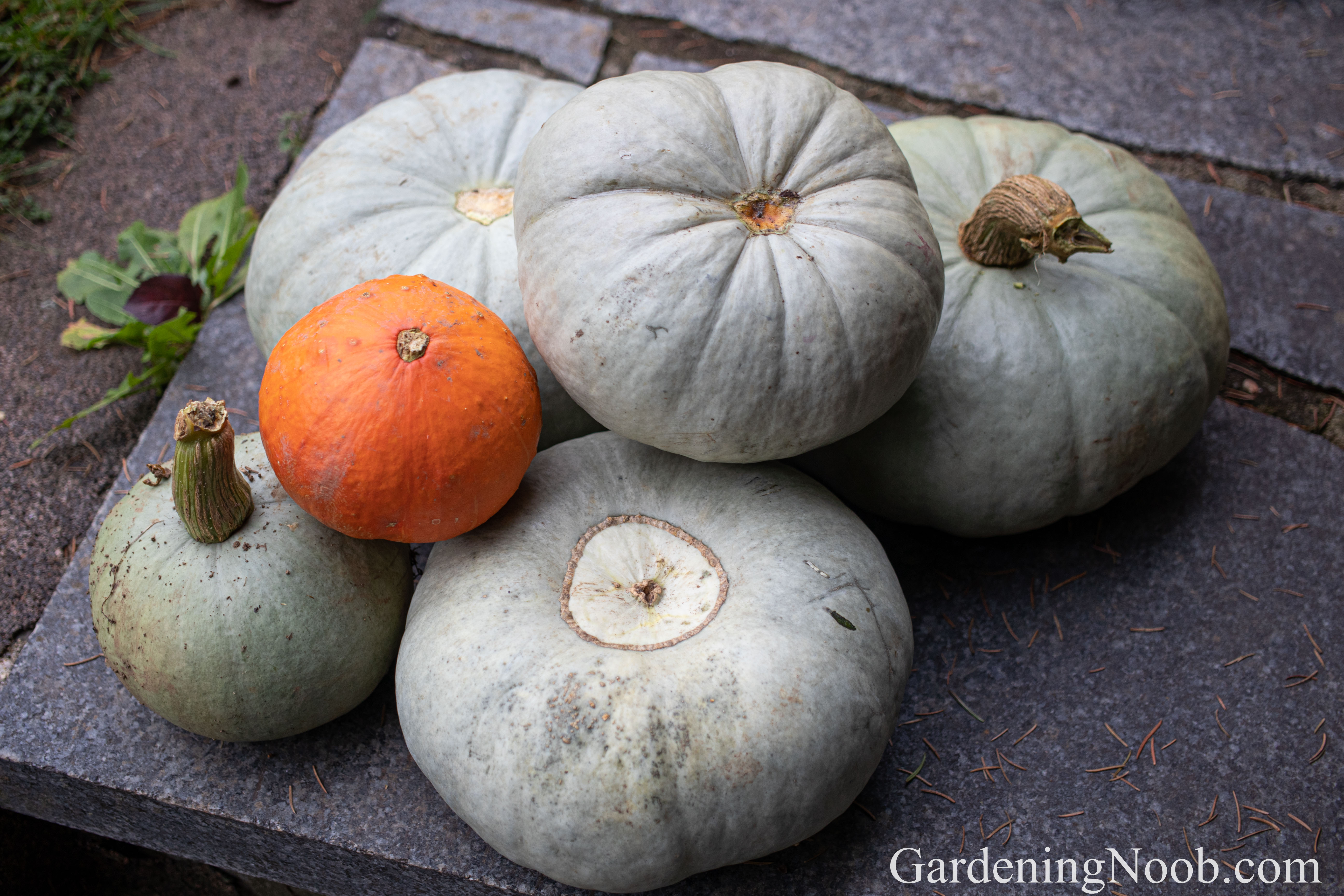
I oftentimes heard from more experienced gardeners that squash plants love to grow in a compost pile. I never tried it in practice though, well, not until the last year when it happened kind of accidentally and it ended up with us having the best squash harvest ever…
It was in the middle of spring last year when I dumped all the compost we had in the middle of the allotment. I intended to spread it all over the growing area before the season got in full swing, but due to lack of time, I had to just leave it there. Then, in a few weeks’ time, squash seedlings emerged out of it. I guess they grew out of dormant seeds I threw into the compost bin one season prior to that. Those self-germinated squash plants kept growing and growing vigorously throughout the summer, and – by the middle of autumn – produced lots of healthy and delicious fruits without me lifting a finger!
I never watered those self-seeded plants. Neither did I fertilize them or touch them in any other way. But they produced plenty of fruits nonetheless. I realized that nutrient-rich compost was all they needed to thrive. It not only fed them, but kept their growing environment moist and free of weeds too.
#1: The more compost you give them the better
This year I wanted to give squash the same luxury of growing in the compost, and, hopefully, get even more fruits in return. I brought all the compost we had to the allotment again. This time though, I didn’t just dump it and leave it in a pile, but spread it over two garden beds. Then we planted 18 squash seedlings in them…
And the result?
We produced slightly more fruits than last year. It was a record-breaking year in terms of the number of fruits, but to be honest, I was a little disappointed. I expected more. At least double the amount we got, because we had three times more more plants growing this year.
So why the differences?
I thought about it and came to the conclusion that the thickness of the compost layer must have made the difference. The amount of compost was similar. The difference this year was that I spread it over twice as large area.
There were other things that may have contributed to the lack of fruits as well…
#2: The sooner you (trans)plant them the better
With the exception of sweet potatoes, this season we raised all vegetable seedlings by ourselves. We saved money this way, but we had to put lots of time and effort in it too. Transplanting them to the garden and to the allotment was not a breeze either. We had tons of seedlings to move and things became overwhelming at one point. We had to make priorities…
It suffices to say that the squash wasn’t a priority. We left it for the end. We started the seeds quite late, and what’s more, we did not manage to move the plants to the allotment before the end of May. The last ones went into the ground even later (in the beginning of June). This means that we were about three to four weeks behind schedule. So, we lost a lot of growing time this way…
3: They need water during dry summer spells
One thing I don’t like to do is water our vegetable plants with tap water. Besides chlorine it oftentimes other soil-damaging substances (such as fluoride and salts) as well. I much rather let rain do all the work and use mulch to keep the soil moist afterwards…
Sometimes though, you just don’t have a choice. You have to do it, or you risk ending up with less produce – or no produce at all. And that’s exactly what happened to us this season. You see, soon after we moved our squash seedlings into the ground, summer started and it suddenly became very hot during days which were then accompanied by long periods of dry spells…
The plants were caught off guard. They had to face extreme weather conditions (which lasted almost throughout the whole summer) before they could properly adjust to their new environment. Instead of producing, they had to focus on surviving.
#4: They are resilient plants
It was obvious that the plants are struggling. I could see it everytime I visited the allotment during the day. Their leaves were always wilted and I was convinced that they are not going to make it…
Squash are resilitent plants though. They not only survived, but fully recovered as soon as the weather towards the end of August changed and there was more rain. They started flowering soon afterwards, and later on – towards the end of Septemper – they started producing as well. They produced about eight to ten beautiful squash fruits in total. We still have four of those waiting to be eaten over the course of the upcoming winter!
We made lots of mistakes with squash this season. I’m sure we would have got more fruits if we had planted them sooner and in a thicker layer of compost. Or if we had watered them regularly during those hot and dry summer months. But at the end of the day (or better said at the end of the season) we did get produce. What’s more, we also learned new things which will help us do even better in the future.
